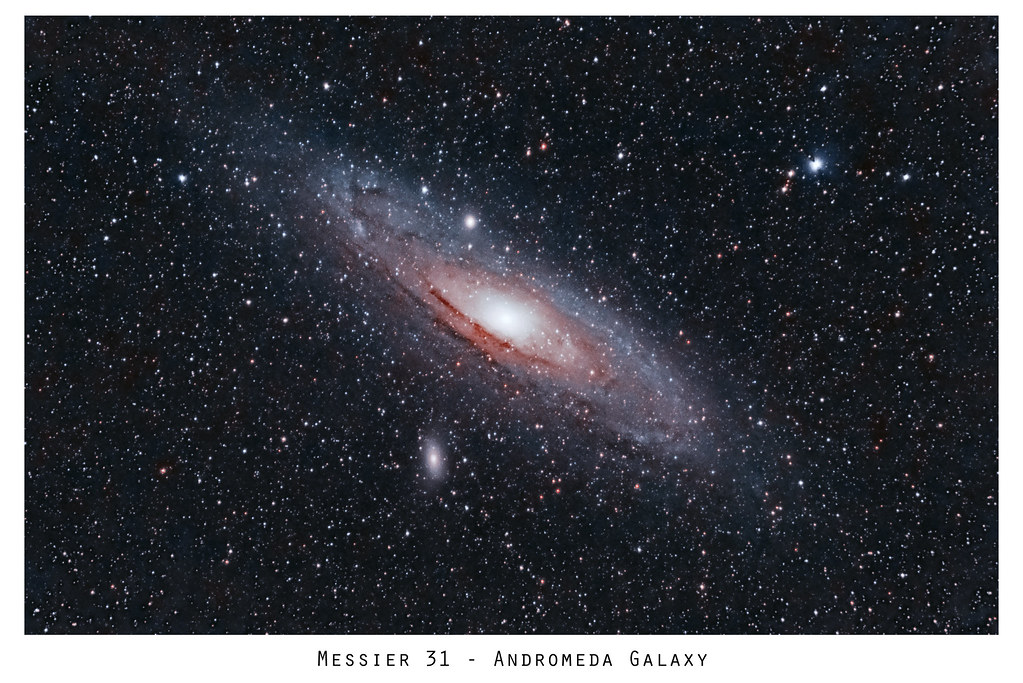The Andromeda Galaxy, also known as Messier 31, M31, or NGC 224, is a spiral galaxy approximately 2.5 million light-years from Earth, and the nearest major galaxy to the Milky Way. Its name stems from the area of the sky in which it appears, the constellation of Andromeda.
The 2006 observations by the Spitzer Space Telescope revealed that the Andromeda Galaxy contains approximately one trillion stars, more than twice the number of the Milky Way's estimated 200 to 400 billion stars. The Andromeda Galaxy, spanning approximately 220,000 light-years, is the largest galaxy in our Local Group, which is also home to the Triangulum Galaxy and other minor galaxies. The Andromeda Galaxy's mass is estimated to be around 1.76 times that of the Milky Way Galaxy.
The Milky Way and Andromeda galaxies are expected to collide in 4.5 billion years, merging to form a giant elliptical galaxy or a large disc galaxy.
This image is my second DSO attempt. Around 2 hours of exposure and many more hours spent processing.
 Messier 31 - Andromeda Galaxy by Joel Spencer, on Flickr
Messier 31 - Andromeda Galaxy by Joel Spencer, on Flickr
The 2006 observations by the Spitzer Space Telescope revealed that the Andromeda Galaxy contains approximately one trillion stars, more than twice the number of the Milky Way's estimated 200 to 400 billion stars. The Andromeda Galaxy, spanning approximately 220,000 light-years, is the largest galaxy in our Local Group, which is also home to the Triangulum Galaxy and other minor galaxies. The Andromeda Galaxy's mass is estimated to be around 1.76 times that of the Milky Way Galaxy.
The Milky Way and Andromeda galaxies are expected to collide in 4.5 billion years, merging to form a giant elliptical galaxy or a large disc galaxy.
This image is my second DSO attempt. Around 2 hours of exposure and many more hours spent processing.
 Messier 31 - Andromeda Galaxy by Joel Spencer, on Flickr
Messier 31 - Andromeda Galaxy by Joel Spencer, on Flickr
Last edited:


 . Apparently there are a couple of dark sites inside London
. Apparently there are a couple of dark sites inside London  which I find hard to believe. Tempted to jump on a train down to Surrey with my camera and tent.
which I find hard to believe. Tempted to jump on a train down to Surrey with my camera and tent.